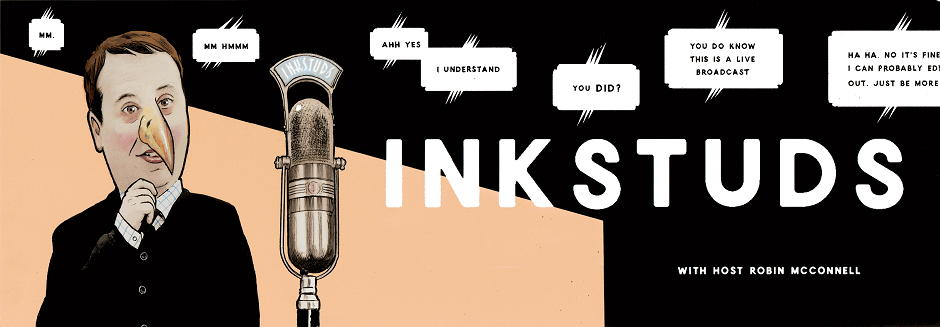A couple of months ago, my good friend, Robert Dayton filled in for me at the Discorder, and wrote a fabulous article about the new Popeye book from Fantagraphics. Here it is in full splender for reading enjoyment.
Two thousand and six was a profoundly great year in comics for initiates and novices alike, and let’s hope, as our eyes gaze heavenward, that this is a signifier of what’s to come in 2007 and beyond. You needn’t be bound and shackled by the mires of comic geekdom to appreciate these fine objets d’art. Proof of this pudding can be found in Popeye Vol. 1: “I Yam What I Yam†by E.C. Segar.
What many of us know of Popeye is a mere bastardization faded through Xerox visions. The original Popeye was crusty and, at first, only incidental. When E.C. Segar began his Thimble Theatre newspaper strip in 1919 it was little more than a comic take on adventure serials, damsel in distress kinda stuff. Eventually genre parody gave way to propelled flights of whimsy, stereotypes dissolved as Segar developed true characters and archetypes to propel these continuing misadventures, such as Olive Oyl and her brother Castor Oyl. Popeye made his first appearance one day back in 1929, only to disappear back into the ether after a few months. He wasn’t gone for long. Readers wrote in, demanding Popeye’s return—a spark was struck, something had stuck, a comic anti-hero that caught permanent fancy in the public’s twinkling craw.
The strip was brilliant and Popeye just fit. Thimble Theatre was like ergot-laced barnacles, comedic interaction with a beating bandaged heart, featuring fantastic characters like the wish-granting Whiffle Hen and the eerily menacing Sea Hag. Most importantly, Thimble Theatre was funny.
By the time of Segar’s death in 1938, Fleischer Studios had already produced a few very impressive Popeye cartoons in their own right, where fleeting moments from the original strip (spinach, Brutus nee Bluto) became permanent mainstays. Outside of the creator’s vision, these tropes nonetheless landed on the screen and other merchandising-friendly elements of popular culture.
With this new volume from Fantagraphics, gregariously steel yourself for the real Popeye, the original ancient scrolls that stem from just before his first appearance and continue onwards chronologically. Here Popeye defies the conventions that were later to be thrust upon him by the non-Segars, the lesser lights. This big bound collection is a pure antidote for depression, especially if one veers towards surliness or cynicism, though wide-eyed naives can easily enjoy it as well. Volume One in a planned six-installment series, this stunningly assembled book holds great promise for the work to come (Volume Two introduces Wimpy!).
Designed by Jacob Covey, the hardcover package features a cut-out word balloon title—it’s literally cut out of the hardbound cover. Fantagraphics has made excellent use of digital technology to render these strips in crisp glory; the full page colour newspaper strips are lush, soft washes. As such an integral part of comics history, these strips should always be in print. Before this book, one had to desperately seek out Fantagraphics’ previous re-printings from the early 90s, unassuming volumes that, even in soft cover, were less economical and not as advanced in design and layout. This book is a steal at approximately thirty dollars, an investment of joy.
A few years back when I was seeking those earlier inferior volumes, my travels led me to Olympia, Wa—also known as Indie Rock Hell—where there exists a great comic shop called The Danger Room. The two proprietors would often argue about which was the greatest newspaper strip of all time: Thimble Theatre or George Herriman’s Krazy Kat. They each had both strips on their Top Two list anyway, so it was a microscopic yet enjoyable argument. If you want to add fuel to that debating fire there are some wonderful reprints of Krazy Kat also available, but I still pledge allegiance to Thimble Theatre.
Before I take leave of you I should mention another must-have book that had me giddy as a schoolgirl’s first ride on a pony. Entitled Art Out Of Time: Unknown Comics Visionaries 1900-1969 and edited by Dan Nadel, this book pleases the palates of both comic know-it-alls and future junior initiates alike, with overlooked works by those who slipped through the cracks whilst expanding the form. And absolutely no super heroes to speak of. Just sweet delirium tremors. Seek it out. It will cause you to float in space.

